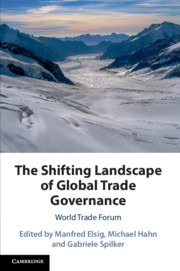Book contents
- The Shifting Landscape of Global Trade Governance
- The Shifting Landscape of Global Trade Governance
- Copyright page
- Contents
- Figures
- Tables
- Contributors
- Preface
- Abbreviations
- 1 Introduction
- Part I New and Old Challenges
- Part II Trade Policy and Trade-Related Concerns
- Part III Development Angles
- Part IV Diffusion across Economic Treaties
- 14 Heading for Divorce?
- 15 The Regime Complex for Investment Governance
- 16 Asian Trade Agreements in Services
- Index
- References
16 - Asian Trade Agreements in Services
Filling Form with Content
from Part IV - Diffusion across Economic Treaties
Published online by Cambridge University Press: 05 August 2019
- The Shifting Landscape of Global Trade Governance
- The Shifting Landscape of Global Trade Governance
- Copyright page
- Contents
- Figures
- Tables
- Contributors
- Preface
- Abbreviations
- 1 Introduction
- Part I New and Old Challenges
- Part II Trade Policy and Trade-Related Concerns
- Part III Development Angles
- Part IV Diffusion across Economic Treaties
- 14 Heading for Divorce?
- 15 The Regime Complex for Investment Governance
- 16 Asian Trade Agreements in Services
- Index
- References
Summary
This chapter takes stock of the dense network of trade agreements in services that has evolved in the East Asian region, and considers some of its prospects in the wake of the withdrawal of the United States from the TPP negotiations. Perhaps surprising for a region associated with booming economies, trade agreements in Asia have not always been driven by economic considerations. At the same time, it remains unclear if services trade has been as much a factor in trade agreement formation as in other regions. Based on DESTA data, the chapter shows that services trade (at least in its cross-border and consumption abroad modes) and PTA formation go hand-in-hand in Asia as well, even though the panoply of agreements remains divided by two different and possibly incompatible approaches, as some countries prefer positive lists and others prefer negative lists. With the United States choosing to withdraw from regional PTA projects for the time being, the positive-list approach looks to be the most common in the near future, while liberalization prospects may be limited.
- Type
- Chapter
- Information
- The Shifting Landscape of Global Trade GovernanceWorld Trade Forum, pp. 388 - 406Publisher: Cambridge University PressPrint publication year: 2019



